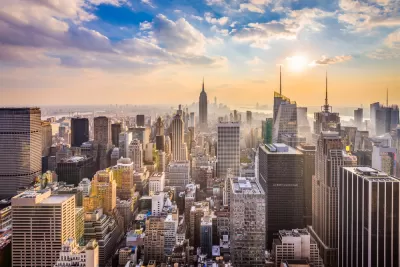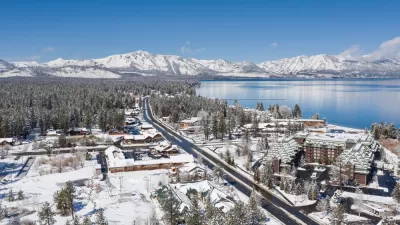After the ‘urban exodus’ brought on by the pandemic, most of New York City’s boroughs are regaining their population.

As the pandemic began to shut down public life, Manhattan saw a sharp outmigration of households seeking more space and more affordable housing outside the city. “In that first pandemic year, New York City saw more outbound migration than any other metro area in the US, with at least 160,000 households fleeing between March 2020 and February 2021, according to the data provided by Melissa, which is sourced from US Postal Service change-of-address records.”
The trend is starting to reverse, however. “The largest US city still faces a tough road ahead with overall population declining, low office return figures threatening business survival and fear of crime cited as a deterrent to moving to the city,” writes Sarah Holder in Bloomberg CityLab. “But as suburban housing prices spiked and businesses reopened, the data shared by Melissa show that in the second year of the pandemic, migration out of Manhattan slowed down, and migration into the borough increased.”
Meanwhile, “A gradual return to in-office work, at least part-time, and the city’s enduring allure as a global destination are driving some people back. Limited and increasingly expensive housing inventory outside the city may also be making it harder to leave.” According to the article, “Of the five New York City boroughs, all but Staten Island and the Bronx have gained new residents compared to the first year of the pandemic. Manhattan gained the most.” With the suburban housing market growing more competitive, leaving the city is becoming less attractive.
FULL STORY: More People Are Moving to Manhattan Than Before the Pandemic

Planetizen Federal Action Tracker
A weekly monitor of how Trump’s orders and actions are impacting planners and planning in America.

Restaurant Patios Were a Pandemic Win — Why Were They so Hard to Keep?
Social distancing requirements and changes in travel patterns prompted cities to pilot new uses for street and sidewalk space. Then it got complicated.

Maui's Vacation Rental Debate Turns Ugly
Verbal attacks, misinformation campaigns and fistfights plague a high-stakes debate to convert thousands of vacation rentals into long-term housing.

In California Battle of Housing vs. Environment, Housing Just Won
A new state law significantly limits the power of CEQA, an environmental review law that served as a powerful tool for blocking new development.

Boulder Eliminates Parking Minimums Citywide
Officials estimate the cost of building a single underground parking space at up to $100,000.

Orange County, Florida Adopts Largest US “Sprawl Repair” Code
The ‘Orange Code’ seeks to rectify decades of sprawl-inducing, car-oriented development.
Urban Design for Planners 1: Software Tools
This six-course series explores essential urban design concepts using open source software and equips planners with the tools they need to participate fully in the urban design process.
Planning for Universal Design
Learn the tools for implementing Universal Design in planning regulations.
Heyer Gruel & Associates PA
JM Goldson LLC
Custer County Colorado
City of Camden Redevelopment Agency
City of Astoria
Transportation Research & Education Center (TREC) at Portland State University
Jefferson Parish Government
Camden Redevelopment Agency
City of Claremont





























